Foraging is treasure hunting for adults. You’re never sure of just what you will find. But, the more you know the more you will discover.
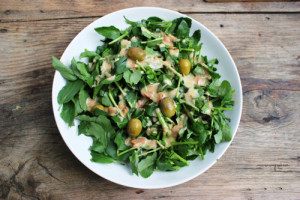
Watercress Salad. Photo by Skopolos News.
I had classes in Gainesville and Ocala this past weekend. When I packed Friday I forgot to add my usual “samples” that I take to every class to start things going and accommodate any late students. Feeling guilty that I did not have my usual teaching materials I spent an hour before each class collecting some wild edibles not usually found at each location. While scrounging around early Saturday for my class I spied Watercress.
Watercress is an ancient and delicious green. It’s not native to North America but came here some 200 years ago and found a new home. It is perhaps the last of the cooler weather plants to blossom just before spring (or summer) heats up.
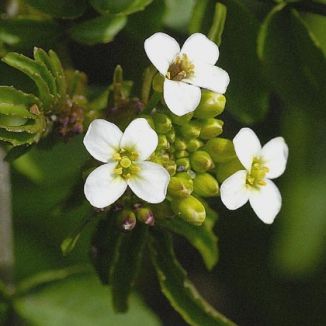
Watercress has the classic mustard blossom of four petals and six stamen, four long two short. Easy to see in the photo.
When in Gainesville this time of year I often to rummage for class examples where 12th Avenue meets Williston near some overhead power lines. I was there collecting Smilax, Grape species, Elderberries and wild garlic when I saw the low-growing Watercress. It’s quite easy to identify with its deep green color, mustard blossom and habit of growing in water. There are a few precautions, however. It often grows in drainage ditches, which have foul water and soil. But you could still take some to a wet spot or pot near you for planting. The other problem is that is also where deadly Water Hemlock likes to grow. They really don’t look that much alike but you have to harvest carefully to not get any Water Hemlock by accident. During the first minute and a half of this video I talk about that problem. Here is a video just about Watercress. Or to read more about Watercress go here.
Speaking of Wild Garlic not only is now the time to harvest it locally related species — such as Garlic Mustards and Ramps — are being harvested as far north as Indiana. Spring has come to many places. Now is the time to go looking. In fact, it might be what is called an “object” lesson. While the exact percentage changes somewhat given the location about 7% of wild plants are edible. That translates into a huge amount of plants. But, it is much easier to go looking for the 7% that are edible than trying to identify everything you see which includes the 93% that is not edible. As in the opening article, make it a treasure hunt. Identify a specific plant that is in season in your area, get a good description of the type of environment it likes to grow in, then visit that environment looking for that plant. It’s a much easier way to go about things.
My Upcoming foraging classes:
Saturday, May 16th, Wickham Park: 2500 Parkway Drive, Melbourne, FL 32935. 9 a.m.
Sunday, May 17th, Highwoods Preserve, 8401 New Tampa Blvd., Tampa FL 33647. 9 a.m.
Saturday May 23rd, Mead Garden: 1500 S. Denning Dr., Winter Park, FL 32789, 9 a.m.
Sunday, May 24th, Florida State College, 11901 Beach Blvd., Jacksonville, 32246. 9 a.m.
To learn more about foraging classes go here.
Need to identify a plant? Looking for a foraging reference? Maybe you have a UFO, an Unidentified Flowering Object, you want identified. On the Green Deane Forum we — including Green Deane — chat about foraging all year long. And it’s not just about warm-weather plants or just North American flora. Many nations share common weeds so there’s a lot to talk about. There’s also more than weeds. The reference section has information for foraging around the world. There are articles on food preservation, and forgotten skills from making bows to fermenting food. Recent topics include: Poison Hemlock and Eating Birds, Study and Respect Plants, Firebow Elderberry, Not Yellow Pimpernel, Small Purple Flowers, Firebow Baccharis, Milkweed? Elderflower Fritters, Fuzzy Tree, Lacto-Fermenting Stachys Roots, Sweet Aromatic Herb, New Book: Southeast Foraging. Hibiscus Help. Native Wormwoods. Ancient DNA. Love Me Some Betony. Passiflora edulis, And Top Restaurant Serves Deer Moss. You can join the forum by clicking on the button on the upper right hand side of this page.
Botany Builder #28: Echinate, covered with spines or prickles. It is from the Dead Latin echinatus, covered with prickles. Sea urchins are in the class of Echinoidea. “Urchin” by the way is an old word for porcupines as is hedgehogs. Mischievous boys are some times called urchins. Locally one medicinal plant is echinate, and that is the Nickerbean. Not a vine and not a tree, it is a “climbing shrub.” The Smilax is also not called a vine but a “climbing shrub.” The Nickerbean is not edible, but does, according to herbalists, have many medicinal applications. To read more about the Nickerbean go here. Incidentally, a student brought part of a shrub to class for identification Sunday. It, too, was prickly. After a bit of research I think it might have been an Aralia, sometimes confused with the Toothache Tree.
Does anyone care to guess what this long-leaf shrub is? I find them at the base of pine trees and in pastures. You have to have the correct botanical name. As incentive I happen to have an extra copy of my DVD #9 which is videos 121 through 135. The first person who get’s it right gets the DVD #9.
This is EatTheWeeds newsletter #162.

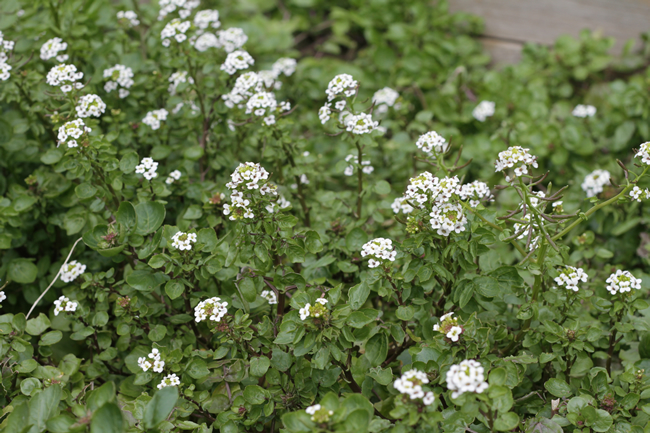
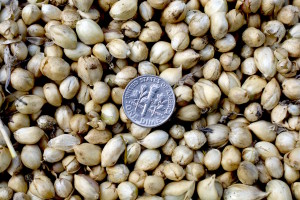

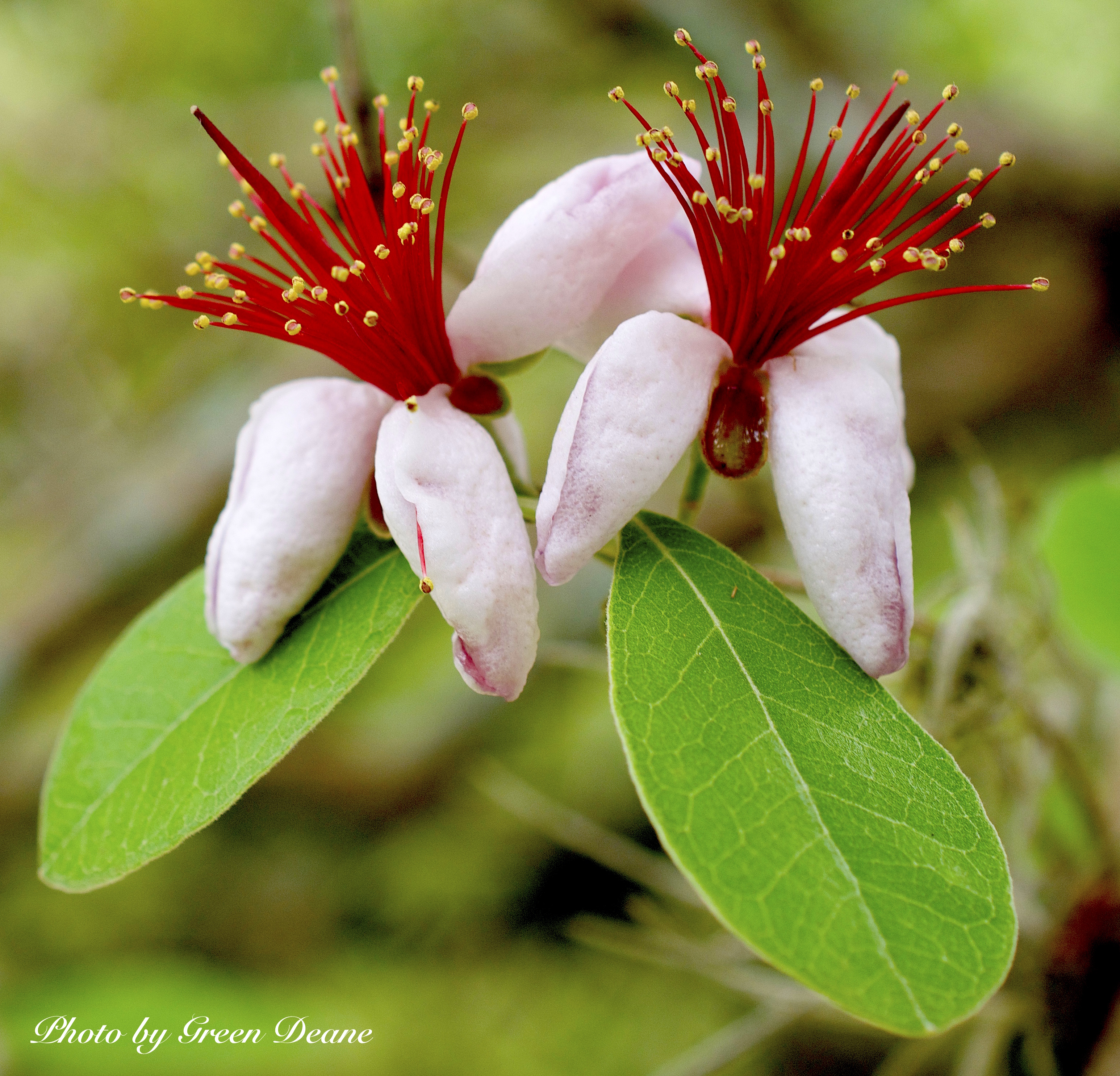
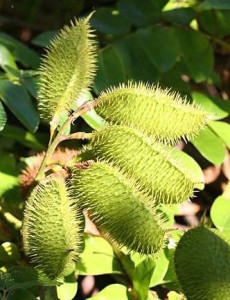
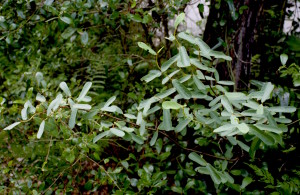

My wife and I really enjoyed your class in Ocala this past weekend. Very informative.
Thanks again,
Jeff & Colleen
Thank you for your kind words and attending the class.
How is the pineapple guava used as an outdoor snack? I was told it is self pollinating, but mine flowers only and never produces fruit.
The blossom petals are edible.
What a lovely dish that is in the image “ Watercress Salad “ – more suitable for an old man like myself preferably without salt . My people call Watercress “Nubat el Bughla” which means “mule’s plant” maybe because it gives strength body wise. Salad Rocket (Argula or E. sativa) of the same family Brassicaceae is called “Girgeer” in the Arab World. Due to its uncountable benefits, dietary and medicinal it is preferred by many to other leafy vegetables cost wise and being available all time. Hence it is not surprising to find folk talk: “Azra el Girgeer tuht el sureer” meaning: “Grow Argula under your bed” perhaps having in mind the similar specific stimulant effect of a well known drug.
Thank you for the useful Botany Builder: “Echinate”. It gave me a big push in identifying a plant I’ve found about two months ago close to the river Blue Nile, blossoming and with echanate fruit type. Today I’ve also found the same plant near my house not far from the Nile, dry after withering – a remnant of last rainy season. After googling and with the help of the Builder, I think I’m not mistaken to nominate wild “Plumbago zeylamica ”. Emphasis is on the medicinal uses of the plant with special interest on the root. As a precaution it is reported that if given internally in large doses Plumbago root acts as a narcotico-irritant poison and its action as stimulant is well worthy of scientific investigation. Ref: http://www.payer.de/amarakosa/amara205c.htm
If you won’t mind, from now on I’ll call my granddaughter “Enchinate” Yusra instead of “Naughty” Yusra. She used to ridicule “ Naughty grandpa” ; she must have heard of it from the nursery.
St. Johnswort
(Hypericum)
That is my entry for the mystery botanical.
Max Phelps